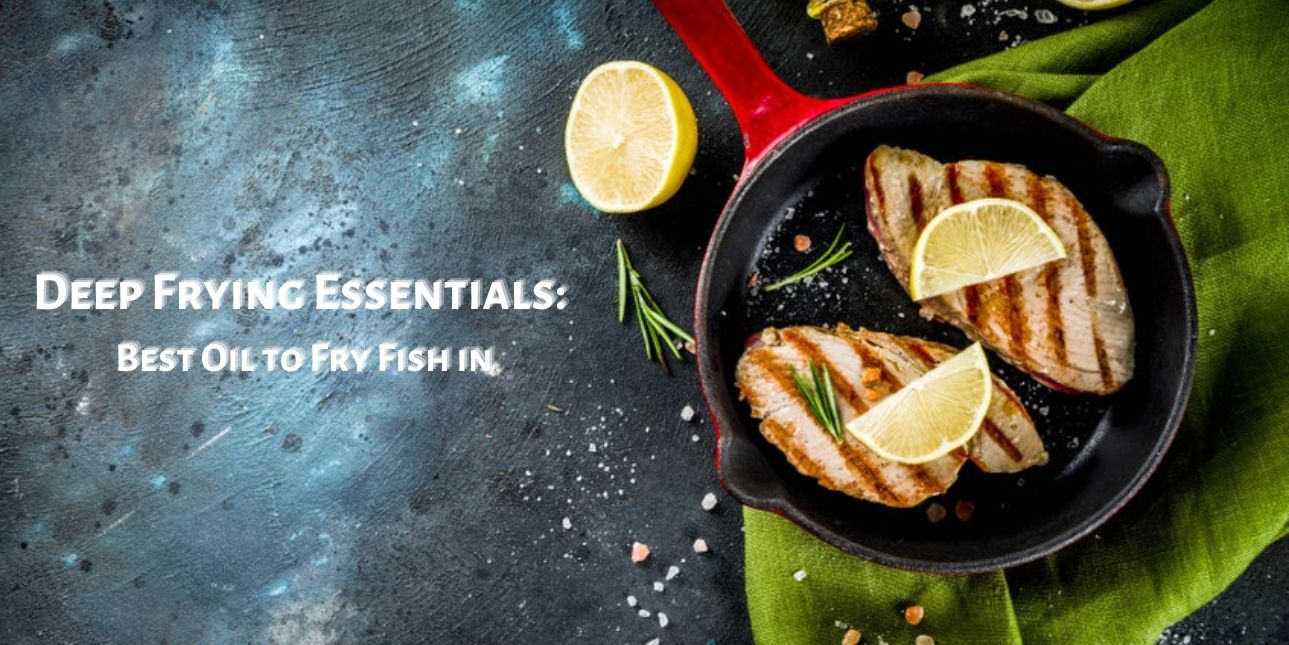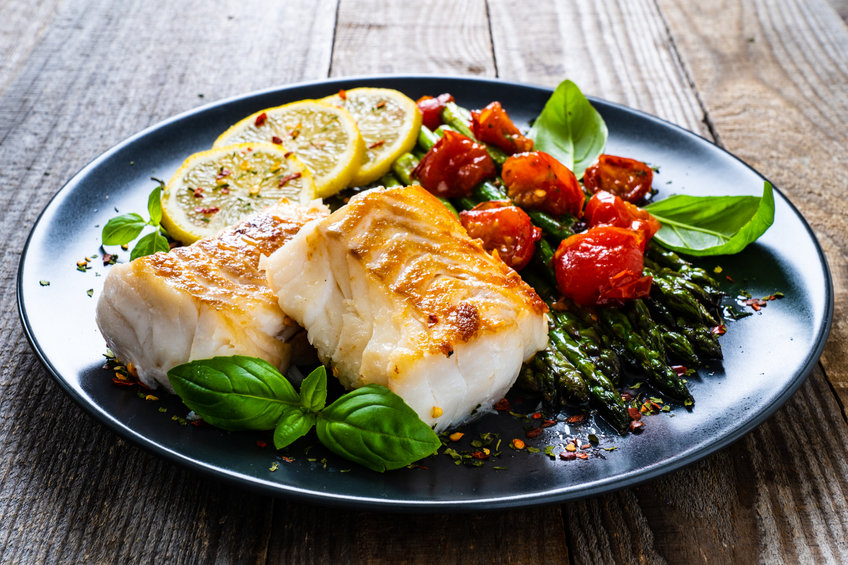
Fried fish is an all-time favorite in cuisines around the world. Most restaurants and fast food joints offer fried fish and chips throughout the day. The taste, texture, and quality of deep-fried fish depend on the oil that you choose.
In this article, we discuss things to consider and the type of oil used for frying fish, the best oil to deep fry fish in, the best tips for frying fish, and a list of equipment and supplies needed for frying fish at your restaurant.
What Oil to Fry Fish in: Things to Consider and Types of Oil
The quality and consistency of fried fish depend on the type of oil used for frying. Here are some things to consider before choosing the right type of oil for your foodservice establishment:
- The Flavor of the Oil: The flavor of the edible oil needs to be neutral so that it does not overpower the fish.
- Flavor Transfer: When you are frying various fish and seafood in cooking oil, the flavors must not get transferred. Choose a cooking oil that stays neutral for extended periods.
- The Smoke Point: The smoke point is the temperature at which the oil starts smoking and stops shimmering. The smoke point is also known as the burning point of the oil. The ideal range of the smoke point is 325 degrees Fahrenheit to 525 degrees Fahrenheit. The best oils to deep fry fish have a high smoking point.
- Health Benefits: Patrons globally are looking for healthy oils. Some cooking oils can reduce the chance of heart disease, liver disease, and other health issues.
There are various cooking oils that are perfect for frying fish. Here, we list some of them:
- Peanut Oil: The smoke point of peanut oil is 450 degrees Fahrenheit, which makes it perfect for frying fish. Peanut oil is a neutral cooking oil that is affordable and prevents the transfer of flavor. Peanut oil contains high levels of vitamin E, monounsaturated fat, and polyunsaturated fats that are good for the heart. Peanut oil can also lower the levels of blood cholesterol.
- Cottonseed Oil: Cottonseed oil is a vegetable oil that is obtained from the seeds of cotton plants. The smoke point of cottonseed oil is around 400 degrees Fahrenheit. Cottonseed oil also contains high levels of omega-3 and omega-6, which can reduce blood pressure and prevent heart diseases. The taste of cottonseed oil is neutral and the oil remains stable at high temperatures.
- Coconut Oil: Coconut oil is one of the healthiest cooking oils that you can use for deep frying seafood. The smoke point of coconut oil is 450 degrees Fahrenheit or above. Coconut oil has a neutral flavor that prevents the transfer of flavors while frying various seafood. It is affordable and readily available in stores.
What is the Best Oil to Fry Fish in?
Canola oil is the best oil to fry fish in. Canola oil is light, which makes it a healthy choice for frying fish. You can also find high levels of Omega-3 fatty acids in canola oil.
Not only can you find canola oil at any grocery store, but it is also more affordable than most edible oils. Additionally, the neutral flavor of canola oil never overpowers the taste of fried fish. The smoke point of canola oil is 400 degrees Fahrenheit, which is perfect for frying fish thoroughly and consistently.
Best Tips for Frying Fish
Here, we list some essential tips for deep frying:
- Type of Cooking Equipment: Choose the right cooking equipment like a commercial fryer to cook batches of fish at predetermined temperatures. The size of fryers and ovens will depend on your frying needs.
- Temperature: The ideal temperature for frying fish is between 360 to 500 degrees Fahrenheit. If the temperature is too low, the batter absorbs too much oil and becomes greasy. If the temperature is too high, there is a high chance of the fish getting scorched and burnt.
- Batter and Coating: The quality of the coat or batter can define the taste of fried fish. The batter needs to protect the fish from hot oil and retain moisture.
What is the Best Fish to Fry?
There are various types of fish available globally, but only some are ideal for deep frying. Freshwater fish taste better and are perfect for deep frying. Oily fishes like tuna and salmon are not ideal for deep frying.
Choose a fish with white flesh that is less oily and has a neutral flavor. Here, we list the best types of fish that are ideal for frying:
- Catfish
- Tilapia
- Shrimp
- Trout
- Halibut
What is the Best Oil for Frying Fish and Chips?
Fish and chips are popular in fast food joints and restaurants globally. Many chefs use canola oil or peanut oil to fry fish and chips, but fish and chips taste better with sunflower oil. Refined sunflower oil is made from pressed sunflower seeds. Sunflower oil has a neutral flavor and high smoke point. Sunflower oil can be considered the best oil for deep frying fish, as fried fish becomes crispy and light when dipped in hot sunflower oil. Additionally, chips or fries also taste better with sunflower oil.
What is the Best Oil for Fish Fry?
Various oils are ideal for fish fries, but the best oil suited for a fish fry is safflower oil. Safflower oil has a high smoke point. Refined safflower oils can have a smoke point of more than 500 degrees Fahrenheit. They have a neutral flavor and remain more stable at high temperatures than other cooking oils. Additionally, safflower oil has levels of monounsaturated fats that are good for your health.
The Equipment and Supplies You Need to Fry Fish at Your Restaurant
Fried fish is a staple dish worldwide. Here is a list of essential items you will need to deep fry fish at your restaurant or foodservice establishment:
Fish Type: Purchase dry freshwater fish that are easy to cook and remain intact while frying. Most prefer to fry and serve tilapia, cod, or halibut.
Commercial Fryer: High-quality commercial fryers are essential for frying fish. Depending on your frying needs, you can purchase gas fryers or electric fryers. You can purchase a large commercial deep fryer for high-volume establishments and countertop deep fryers for small food service establishments. Countertop deep fryers are affordable and are perfect for frying small batches of fish at a time.
Refrigerators: You can marinate and store pre-prepared fish in commercial refrigerators. You can also store ingredients and fried fish for 2 to 3 days in commercial refrigerators. Choose from walk-in refrigerators and coolers, reach-in refrigerators, and under-counter coolers depending on your foodservice needs.
Freezers: Raw fish, chips, or fries, and their ingredients can be stored in commercial freezers for months. You can also store prepared fish and fries in walk-in freezers, under-counter, and glass-top freezers.
Fry Baskets: Fry baskets are essential for lowering fries and fish in the deep fryer. Most commercial deep fryers come with two or more fry baskets. You can purchase additional baskets depending on your frying needs.
Thermometers: You can purchase various thermometers that are best suited for deep frying. You can opt for an analog thermometer, digital thermometer, or digital-infrared thermometer for your deep frying needs.
Choosing the right type of oil to fry fish needs thorough research and experimentation. Ensure that you pick a flavor-neutral oil that is affordable, healthy, has a high smoke point, and is readily available in grocery stores. Finally, the success of your fried fish dishes will depend on the oil, type of equipment, and the type of fish you serve in your restaurant.











